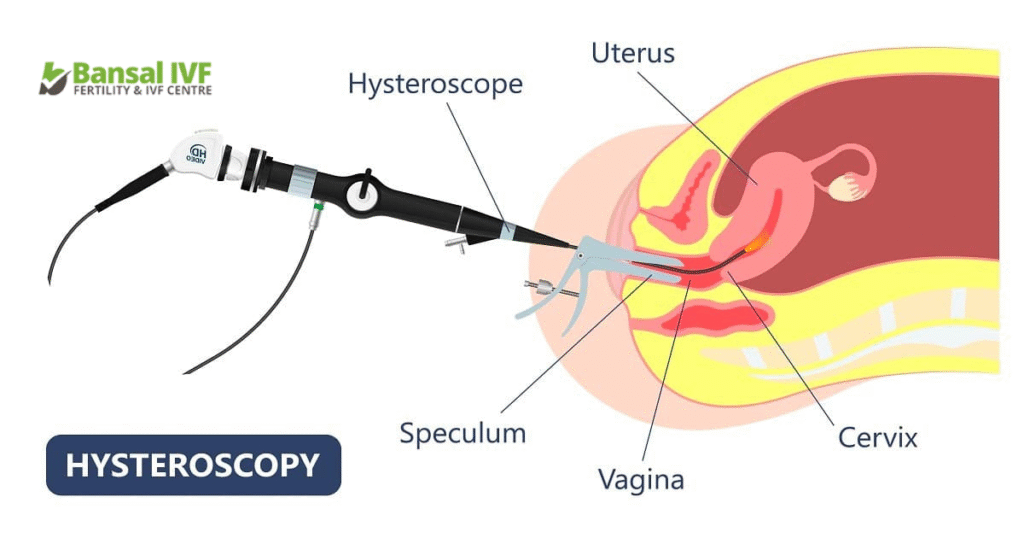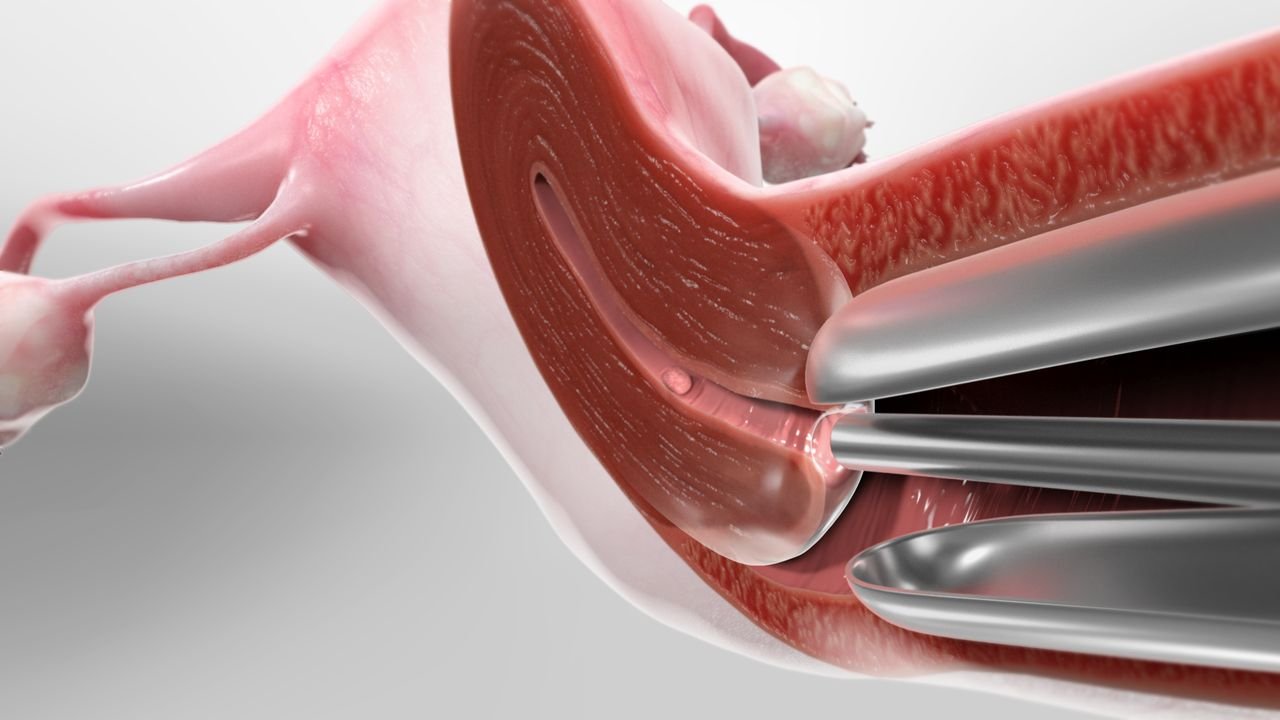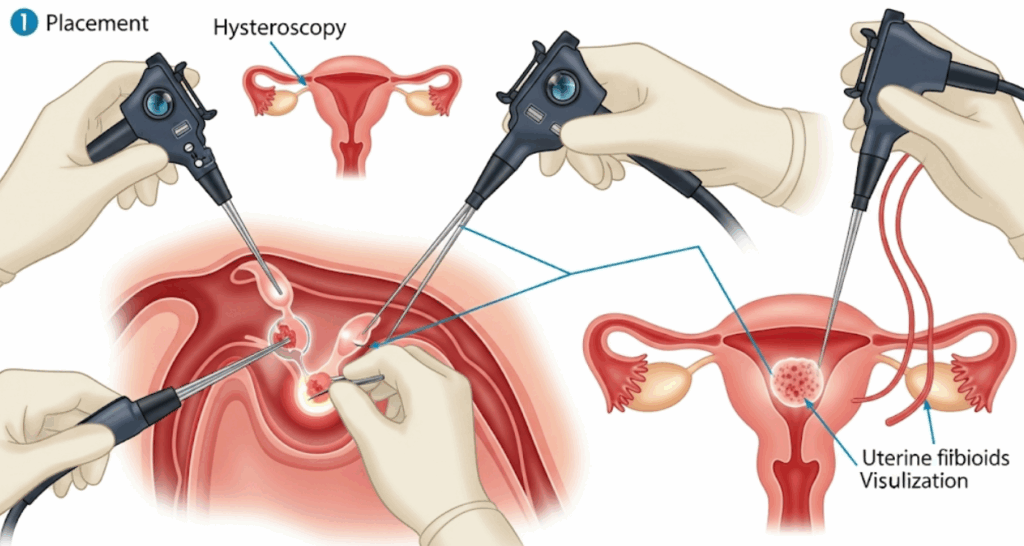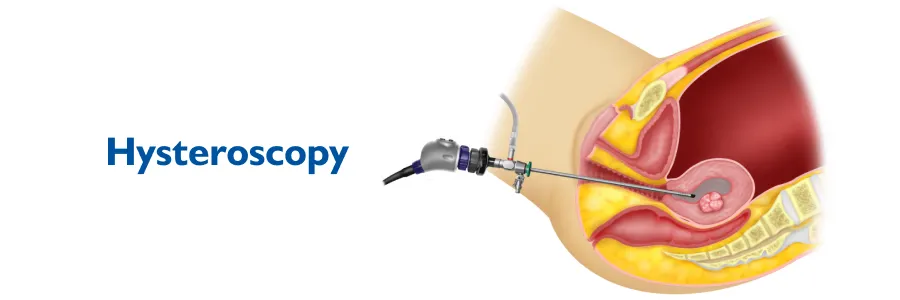Hysteroscopy is a frequent gynecological technique that is used to diagnose and occasionally treat issues inside the uterus. Even though the surgery is frequently performed, many women are nervous about it, particularly when it comes to knowing how it works, what to anticipate and how much it can cost.
Read the blog and get a basic explanation of hysteroscopy, its definition, the process, possible advantages and expenses.
What Is A Hysteroscopy And Why Is It Performed?
A hysteroscopy is a minimally invasive procedure that allows a gynaecologist to look inside the uterus using a thin, lighted instrument which is called a hysteroscope. This instrument is inserted through the vagina and cervix into the uterine cavity with eliminating the need for external incisions. It can serve both diagnostic and therapeutic purposes, making it a versatile tool in gynaecology.

Doctors often recommend this process of Hysteroscopy when a woman experiences irregular menstrual bleeding, unexplained infertility, recurrent miscarriages or any kind of pelvic pain. It is also used to detect structural issues such as fibroids, polyps, scar tissue (adhesions) or congenital abnormalities of the uterus. In addition to diagnosis, the procedure can sometimes be used for treatment.
There are other invasive surgical options as well but hysteroscopy usually requires a lesser recovery time and the risks are fewer. For many women, this process is offering more clarity and relief by identifying the causes of symptoms that can cause trouble in the treatment. By understanding why it is recommended by the doctors can also help the patients to feel more informed and empowered when making healthcare decisions.
Know About The Procedure: What To Expect Before, During And After The Hysteroscopy?
The hysteroscopy procedure is carried out either in a hospital or a clinic, by giving local anesthesia, sedation or general anesthesia depending on the complexity and the patient’s comfort level. For a diagnostic hysteroscopy, local anesthesia or even no anesthesia may be required, while operative hysteroscopy which includes removing fibroids or polyps may require stronger anesthesia for ease.

Before the procedure starts, the doctor may recommend certain tests as well. Such as a pregnancy test, pelvic ultrasound or blood work to ensure suitability. Patients are usually advised to avoid eating or drinking for a few hours beforehand if anesthesia will be used.
During the Hysteroscopy, the instrument called hysteroscope is carefully used and inserted through the vagina and cervix. It gives the clear view of the uterine cavity, saline or carbon dioxide gas is gently introduced to expand the uterus. The doctor then examines the lining of the uterus on a monitor connected to the scope. If necessary, small instruments can be passed through the hysteroscope to remove abnormal tissue or correct structural issues.
The procedure usually takes 15–30 minutes pf duration that depends on its purpose. After that the patients may experience mild cramping, spotting or even watery discharge for a few days. Most women can return to normal activities within 24–48 hours though active exercises. Or intercourse may be restricted for some time. Follow-up appointments ensure proper recovery and review of any biopsy results.
What Are The Benefits And Risks Of A Hysteroscopy Process?
One of the key benefits of this process Hysteroscopy is the double benefit as it is both. A diagnostic and therapeutic tool. It is providing a direct view of the uterine cavity. That allows the doctors to know about the abnormalities with precision. At the same time, it enables treatment of these issues in real time often avoiding the need for multiple procedures. For all the women who are struggling with infertility, abnormal bleeding or miscarriage. Hysteroscopy can be a crucial step in improving reproductive outcomes.

The minimally invasive nature of hysteroscopy also means less pain, quicker recovery and lower risk compared to traditional surgery. Many patients return home the same day and even the complications are relatively rare. When they do occur, they may include infection, excessive bleeding. Uterine perforation or adverse reactions that may be due to the anesthesia given before the treatment. However, these risks are minimized when the procedure is performed by an experienced gynecologist.
It is also important to also know about the emotional. And benefit of the process hysteroscopy and the Cost Of A Hysteroscopy. For women who have been dealing with unexplained symptoms, this procedure often brings much-needed answers and comes to the rescue. This reassurance can significantly reduce anxiety and give the way for effective treatment plans. Overall, the balance of benefits removes the potential risks for most patients.
Understanding The Cost Of A Hysteroscopy:
There are several factors on which the Cost Of A Hysteroscopy depends and can vary. The factors such as the country and city where it is performed. The type of centre, type either diagnostic or operative and the kind of anesthesia used for the treatment. Also, the insurance coverage plays a major role in determining out-of-pocket expenses. As many insurance plans cover hysteroscopy if it is considered medically necessary, particularly for symptoms like heavy bleeding or infertility.

The prices may be significantly lower at different places and also the experiences of the doctor. The hospital and considering the extra services like anesthesia and post-procedure care all affect the variance in the costing.
All costs, including unstated ones like pre-procedure diagnostics, prescription drugs, and follow-up visits, should be discussed up front with patients. Prior to scheduling, it’s a good idea to confirm insurance coverage. Patients can lessen their anxiety about the surgery and make appropriate plans. If they are aware of the financial concerns beforehand.
Conclusion:
Hysteroscopy is an advanced and nominally invasive process that i. It plays an essential role in the diagnosis as well as treating a range of uterine abnormalities. Right from investigating abnormal bleeding and infertility to removing fibroids and polyps. This process ensures clarity and real solutions for many women. The process itself is relatively simple with quick recovery times and high success rates. Although it does also carry risks like any medical procedure.

When it comes to cost aspect there are factors such as location, facility. Type of hysteroscopy and insurance coverage which actually determine the final bill. The better understanding of the complete process and Cost Of A Hysteroscopy allows every aspiring woman to make informed decisions. With full confidence. And with the right medical guidance. This process can be a crucial step towards the better reproductive health and overall well-being.
Contact Bansal IVF today!
